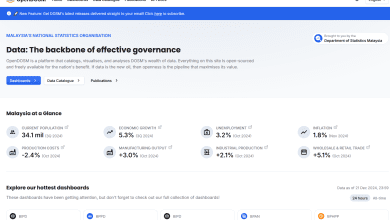Freak accident or culpable negligence?
By Mariam Mokhtar
Many people are afraid of using lifts because they fear heights or being confined in an enclosed space. A few, who have been trapped in a lift, vow never to use the elevator again. They say that when they were trapped, the alarm did not work, or that they were in darkness, suspended many floors above ground. Our fears have been reinforced by Hollywood movies depicting lifts plummeting to the ground.
The ordeal of not knowing when one will be rescued will cause some to panic and hyperventilate. The recent incident when a family was trapped in the lift at the Perak Golf Club is testimony to shoddy maintenance and a delay in rescue.
One wonders if incidents involving lifts are recorded by the health and safety department of the state? Do the public have access to these figures? Will statistics show that lift accidents are a relatively rare occurrence or a growing cause for concern?
A quick trawl through the internet will show that accidents related to lifts are not common but surely one faulty elevator which results in injury and death is serious enough to warrant our attention and that of the relevant bodies.
On February 15, it was reported by Berita Harian and Harian Metro that a lift at Pangsapuri Blok A25, one of the 10-storey apartment blocks located on the naval base in Lumut, had plunged five floors to the ground. The victim’s neighbour, who wanted to remain anonymous, claimed that screams had been heard just before the loud crash, made on impact.
A team from the Fire and Rescue Department searched the wreckage and found the unconscious victim, suffering from severe head injuries. Despite an emergency operation and the best efforts of the medical team at the Seri Manjung hospital, she could not be saved. A steel cable had broken and it struck her head and neck. She succumbed to her injuries the following day.
The cause of the accident was alleged to be a snapped cable. The victim’s husband, a naval officer, blamed the tragedy on the lack of maintenance and said that the tragedy could have been averted if the lifts had been properly maintained. He said, “I am sad that my wife is now a victim of this carelessness”.
It was alleged that residents were reluctant to use the lifts as they would rattle and make weird noises when in use. One person said, “I believe this happened because the steel cables are old and worn because prior to this there was leakage from rainwater and that may have caused rust.”
The Manjung District Police Chief, Assistant Commissioner Jaafar Bab classified the case as “sudden death”. Admiral Abdul Aziz Jaafar of the Royal Malaysian Navy has ordered an investigation of all apartment lifts throughout naval bases in Malaysia. He also said that the navy was not taking any risks despite the lifts being ‘well-maintained and installed with quality parts’.
In a letter to various newspapers, the Institution of Engineers of Malaysia (IEM) have said that the tragedy at Lumut could have been prevented with a “good and committed maintenance programme”.
A spokesman for the IEM said that lifts have several safety features and he could not comprehend how all the safety features could fail simultaneously, in the Lumut incident. The IEM speculated “poor maintenance or even no maintenance” as the probable causes of the accident. It questioned the technical expertise of the technicians tasked with the maintenance of the lift and the quality of the parts used.
The IEM recommended that the Department of Occupational Safety and Health (DOSH) ensures only authorised lift vendors be permitted to perform lift maintenance and that DOSH addresses the shortage of technicians skilled in lift installation and maintenance work.
Around the world, irresponsible companies try to save money by taking shortcuts, by using shoddy equipment, or by reducing maintenance. We see the results of incompetence and mismanagement in many areas of our life; impressive roads which are washed away after a few months, gleaming buildings which leak or slide downhill after heavy rain.
Are figures for accidents involving lifts in Perak collated on an annual basis? How many resulted in injuries? How many fatalities were there? Is our safety record for lifts good or bad? Of the incidents, how many were deemed serious and how many were not? Did the serious ones involve power outages or were they through a failure of the lift’s safety mechanisms?
Is the maintenance of lifts in Perak strictly regulated? How scrupulous are the maintenance, examination and testing regimes? Is there a different system for domestic or public/commercial lifts?
Malaysians tend to be complacent about maintenance, checks and regulations. It is a fact of Malaysian life that the authorities only react when things go wrong, and when injuries are sustained or lives have been lost.


